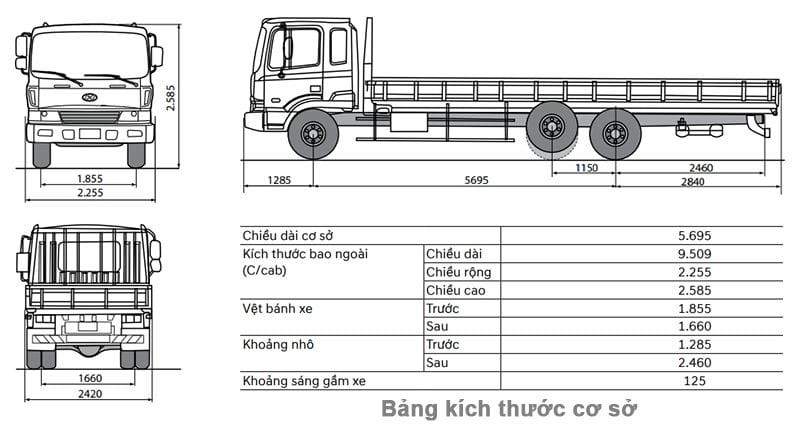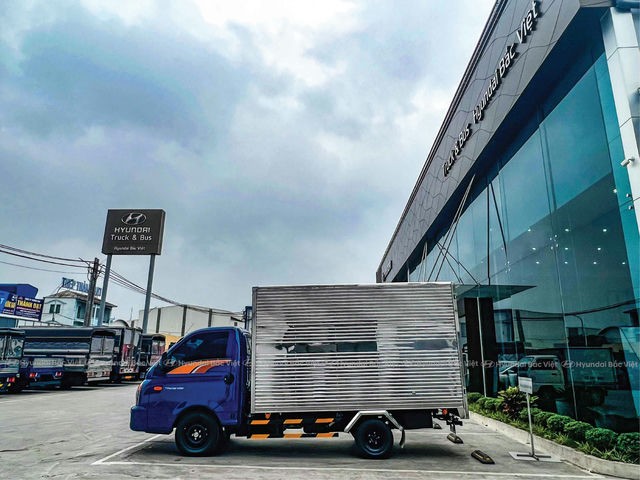The wheelbase of a truck, also known as the axle distance, is a critical technical specification that directly affects the vehicle’s operational capabilities and safety. Understanding this parameter is essential for truck owners and drivers to choose and use their vehicles effectively. This article will delve into the significance of truck wheelbase in operation.
 Diagram illustrating the wheelbase of a truck
Diagram illustrating the wheelbase of a truck
What is Wheelbase?
Wheelbase is the distance between the center of the front wheels and the center of the rear wheels of a vehicle. For trucks, the wheelbase is measured from the center of the front steering axle to the center of the rear axle. For trucks with more than two axles, the wheelbase is calculated from the center of the steering axle to the midpoint between the two rear axles.
Impact of Wheelbase on Cargo Capacity
The wheelbase of a truck directly influences the size of its cargo bed and payload capacity. Trucks with a longer wheelbase typically have longer cargo beds, allowing them to carry bulky or larger quantities of goods.
 Hyundai 110XL box truck with a long cargo bed showcasing a large wheelbase
Hyundai 110XL box truck with a long cargo bed showcasing a large wheelbase
For example, the Hyundai 110XL box truck, with its extended wheelbase, can accommodate a cargo bed as long as 6.3 meters, significantly increasing its cargo capacity.
Importance of Truck Wheelbase in Operation
1. Operational Capability:
- Vehicle Handling: Wheelbase affects the balance and stability of the truck. Trucks with a longer wheelbase generally offer more cargo space but may be less maneuverable, especially in congested urban environments.
- Terrain Conditions: Trucks operating on challenging terrain require a shorter wheelbase for increased agility and obstacle clearance. A shorter wheelbase, combined with high ground clearance, enhances the approach and departure angles.
- Operating Speed: Trucks operating at high speeds benefit from a longer wheelbase for improved stability, particularly when cornering or braking abruptly.
2. Urban Maneuverability:
Trucks with a long wheelbase can face difficulties maneuvering in crowded urban areas, especially when making U-turns or parking. This can lead to traffic congestion and increase the risk of accidents.
 Hyundai H150 box truck demonstrating a shorter wheelbase, suitable for urban driving
Hyundai H150 box truck demonstrating a shorter wheelbase, suitable for urban driving
Conversely, the Hyundai H150, with its shorter wheelbase, offers greater agility in densely populated areas.
3. Traffic Safety:
An excessively long wheelbase can impair the driver’s visibility, reducing situational awareness and increasing the potential for accidents.
Factors Influencing Wheelbase
- Vehicle Load Capacity: Heavy-duty trucks typically have a longer wheelbase to ensure balance and stability under heavy loads.
- Legal Regulations: Each country has specific regulations regarding the maximum dimensions of trucks, which impact wheelbase limitations.
- Intended Use: Different applications (cargo transport, passenger transport, specialized transport) demand different wheelbase configurations.
Conclusion:
Truck wheelbase is a crucial factor to consider carefully when selecting and operating a truck. Understanding this specification helps optimize operational capabilities, ensure traffic safety, and enhance economic efficiency. Truck owners and drivers should consider factors such as load capacity, terrain conditions, intended use, and legal regulations to choose a truck with an appropriate wheelbase.